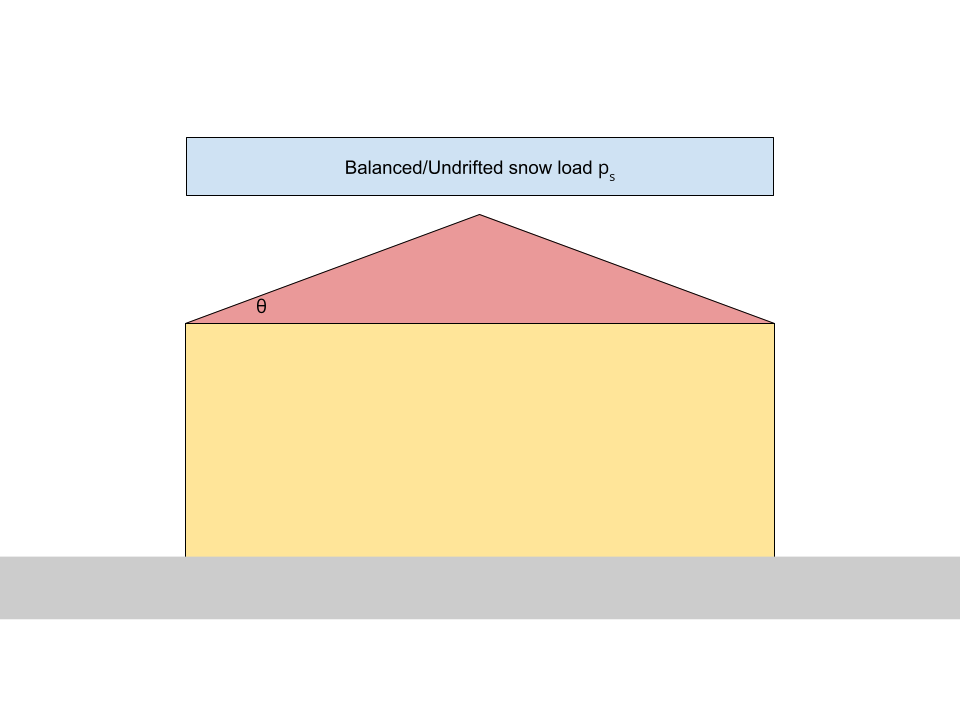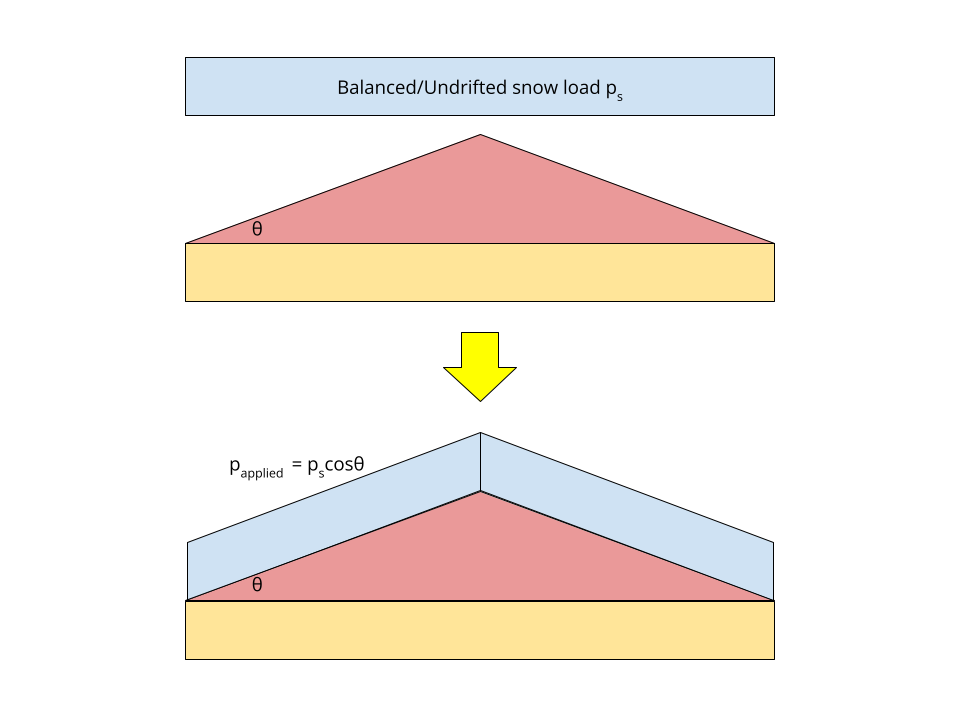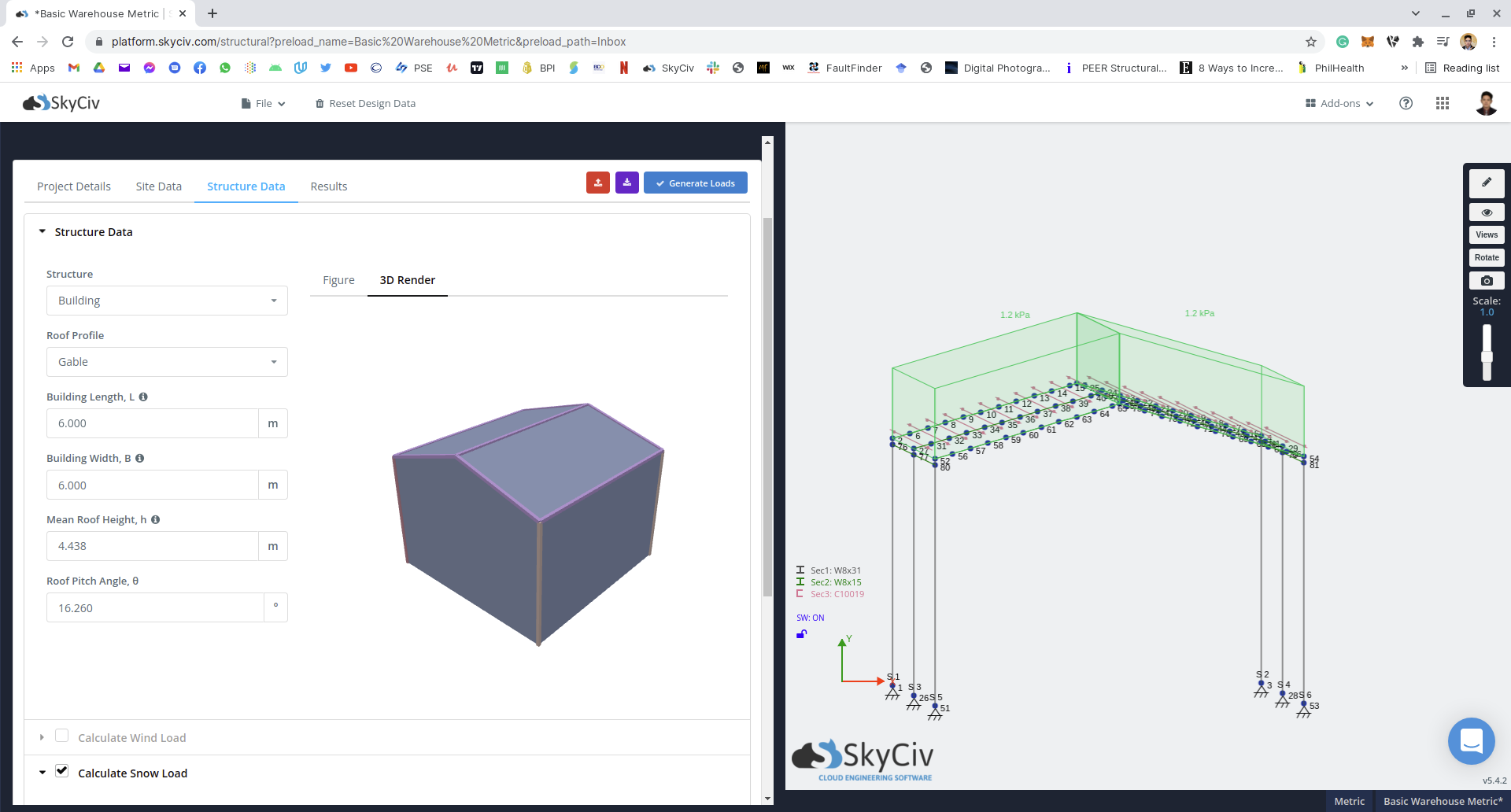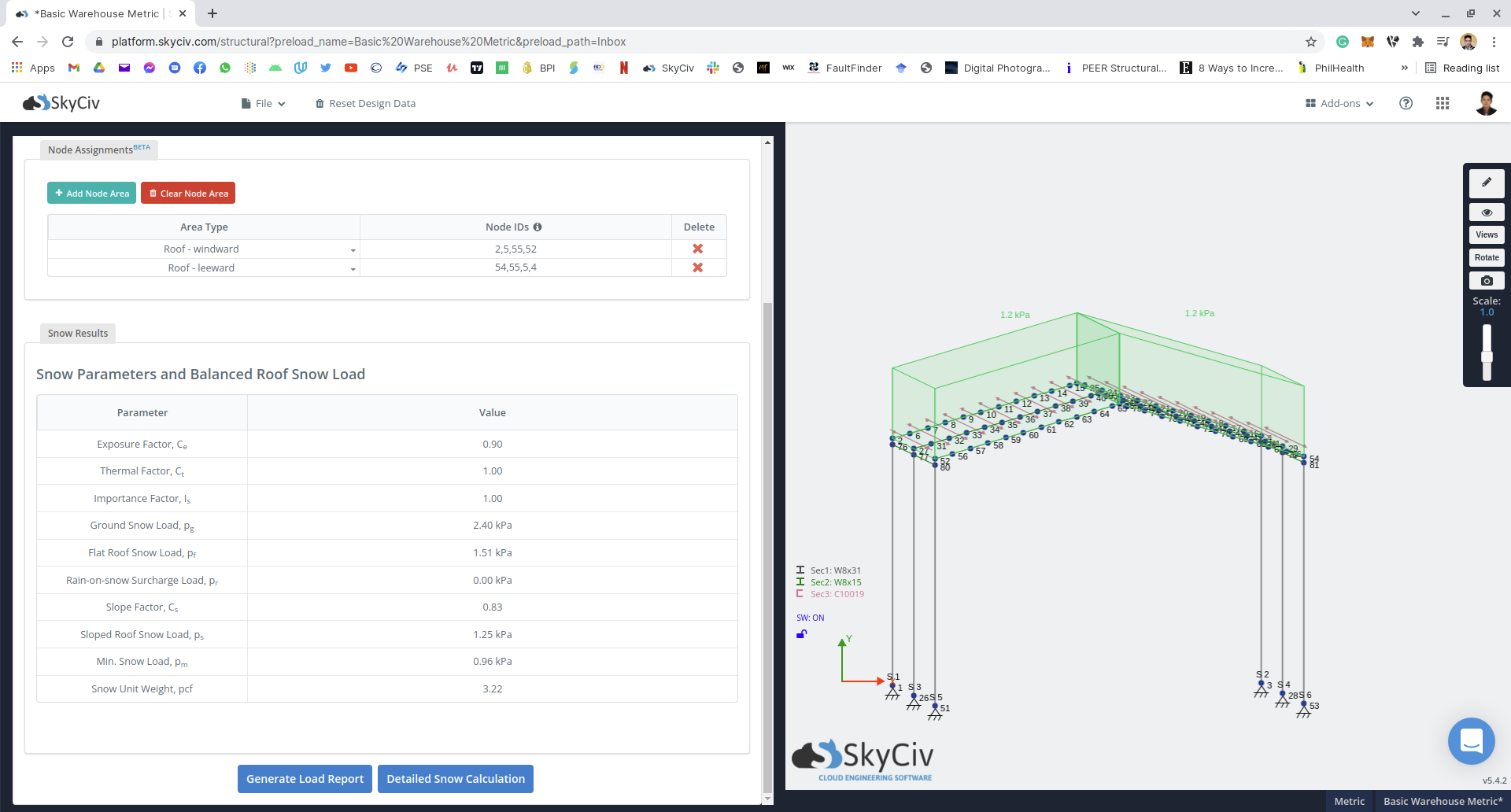Utilisation du générateur de charge pour les charges de neige intégré dans S3D
Dans le calcul des charges de neige, la charge de neige équilibrée ou non entraînée sur le toit est toujours supposée être appliquée sur la projection horizontale de la surface du toit de la même manière que les surcharges sont appliquées. 
Afin d'appliquer la charge de neige sur le toit, nous devons convertir la pression \({p}_{s}\) en le multipliant par la valeur de cosθ. 
Utilisation du générateur de charge SkyCiv dans S3D
Pour Utilisateurs de comptes professionnels, vous pouvez accéder au générateur de charge via les sections de charge de zone dans S3D. Depuis le module, génération de la charge de neige équilibrée/non dérivée \({p}_{s}\) est appliqué automatiquement tant que le nœuds au vent et sous le vent du toit sont définis les Affectations de nœuds table.

La règle pour définir les nœuds du toit au vent et sous le vent est indiquée ci-dessous:


Par conséquent, la charge de neige correspondante appliquée est indiquée ci-dessous:

A partir de ce modèle, la charge de neige équilibrée/non dérivée \({p}_{s} = 1.25 kPa) est converti en multipliant la valeur du cosinus du Angle d'inclinaison du toit θ égal à 0.9603. Par conséquent, la charge de neige correspondante sur le toit est égale à \( p = 1.20kPa\). Utilisation de la charge à ciel ouvert, il est ensuite appliqué à la surface du toit du modèle. Pour le cas déséquilibré/dérivé, la saisie manuelle est nécessaire. Cette fonctionnalité n'est disponible que pour l'ASCE 7-10, ASCE 7-16, CNBC 2015, EN 1991, et AS / NZS 1170.
Ingénieur en structure, Développement de produits
MS Génie Civil
Références:
- Société américaine des ingénieurs civils. (2017, juin). Charges minimales de conception et critères associés pour les bâtiments et autres structures. Société américaine des ingénieurs civils.


